Earlier this year, Matt Bell from The Australian posted an article based on the Hays 2025 Skills Report claiming that Australia was facing a skills crisis, with businesses unable to find workers with the right skills.
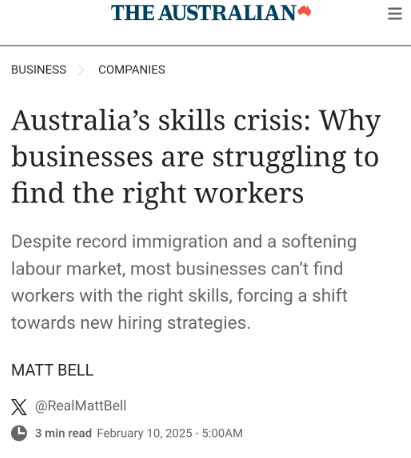
The latest recruitment data from Jobs & Skills Australia shows that employers are now finding it considerably easier to find workers, especially those who are lower-skilled.
The following charts from Justin Fabo from Antipodean Macro show that the overall share of employees finding it difficult to find workers has almost fallen back to pre-pandemic levels.
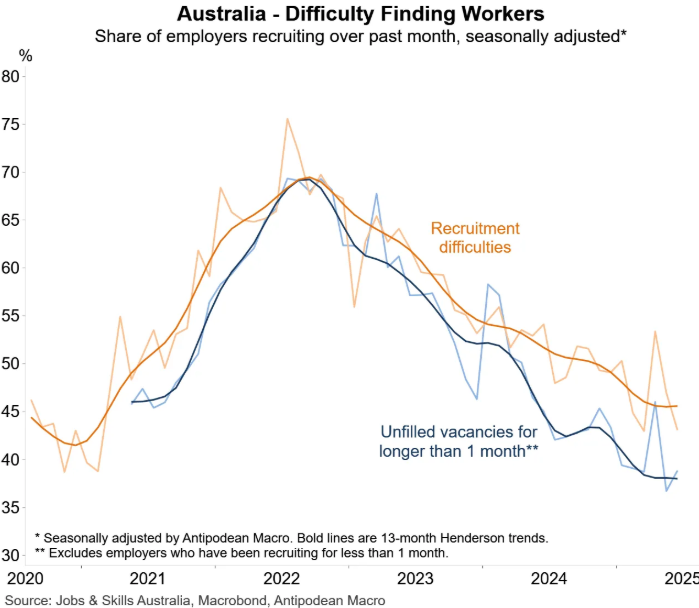
However, higher-skilled workers remain relatively scarce in Australia, whereas lower-skilled workers are oversupplied.
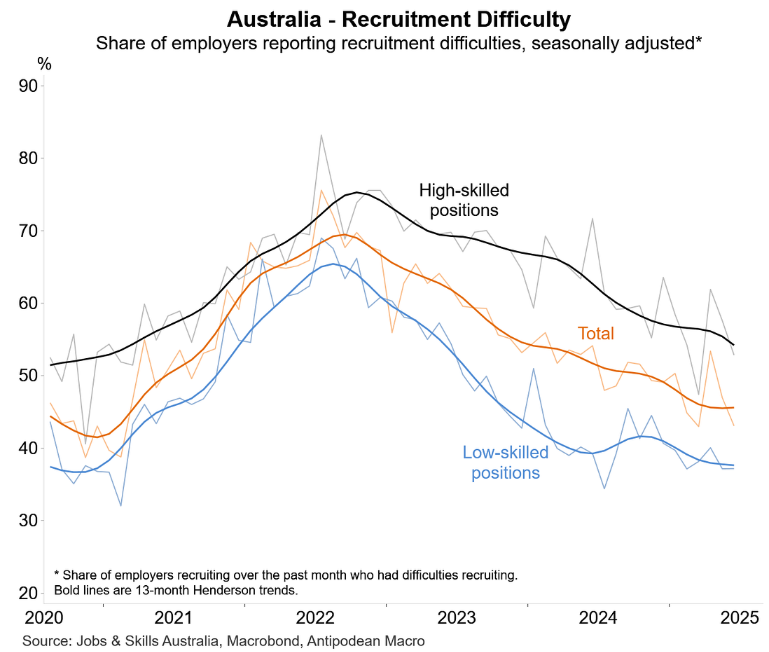
Meanwhile, over the past year, the share of Australian employers cutting staff numbers has risen at faster rate than the share of firms increasing headcount.
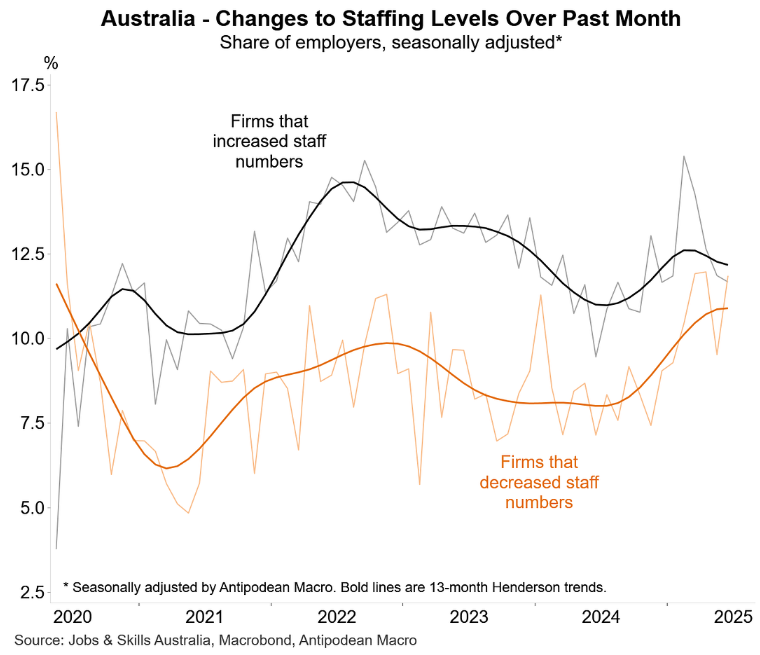
Separately, Jobs & Skills Australia reported that job advertisements have fallen heavily from their peak, although they remain above pre-pandemic levels.
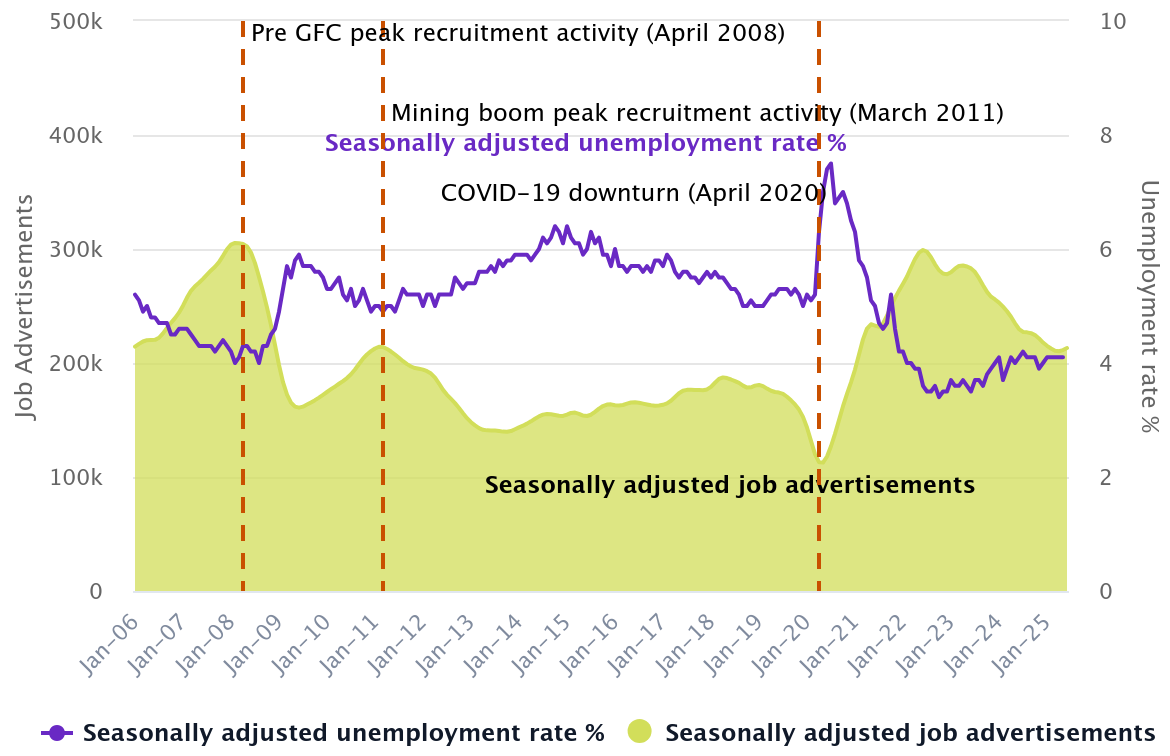
The reality is that the vast majority of Australia’s alleged ‘skilled’ migrants work in low-skilled professions unrelated to their qualifications.
The Committee for Economic Development of Australia (CEDA) reviewed the most recent census and discovered that Australia’s ‘skilled’ migrants are persistently underemployed and underpaid.
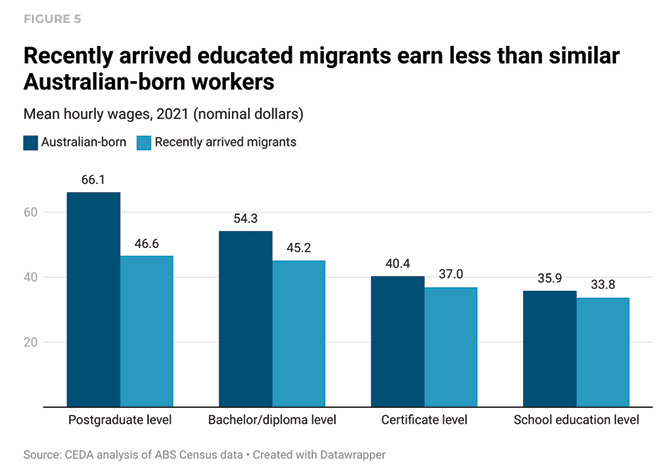
“Recent migrants earn significantly less than Australian-born workers, and this has worsened over time”, CEDA senior economist Andrew Barker said.
“Many still work in jobs beneath their skill level, despite often having been selected precisely for the experience and knowledge they bring”.
The CEDA report also suggested that Australia’s migration system could be contributing to the country’s low productivity growth.
“Labour productivity and wages are closely linked, indicating that migrant labour is not being used as productively as it could be”, the report said.
“This decade, migrants have become increasingly likely to work in lower productivity firms”.
According to Adelaide University’s George Tan, 43% of skilled migrants who used the state-sponsored visa system did not work in their declared occupation.
The vast majority of skilled migrants were overqualified for jobs in retail, hospitality, and service management.
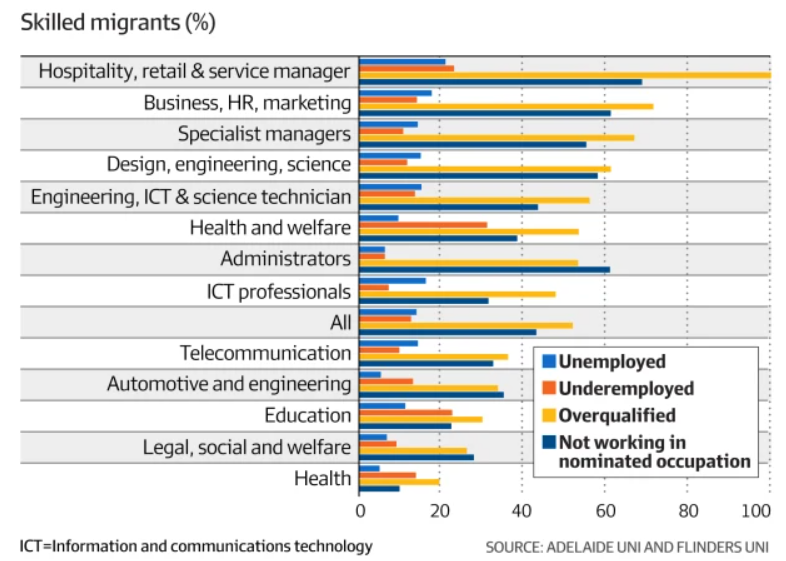
According to Deloitte Access Economics, 44% of permanent migrants in Australia were working in positions below their skill level in 2023. The majority of these unemployed migrants arrived via the skilled stream.
Deloitte estimated that approximately 620,000 permanent migrants work below their skill levels and certifications. Of these, about 60%, or 372,000, entered the skilled migration program:
On average, among those permanent migrants who arrived in Australia in the last 15 years, almost half (44%) are working in an occupation at a lower-skill level than is commensurate with their qualifications (Chart 1).
This means in 2024, there are more than 621,000 permanent migrants living in Australia who are underutilised and not working to their full potential.
Despite the permanent migration program’s focus on attracting overseas qualified professionals with skills in demand that address labour shortages, almost six in ten underutilised permanent migrants in Australia entered via the skills stream.
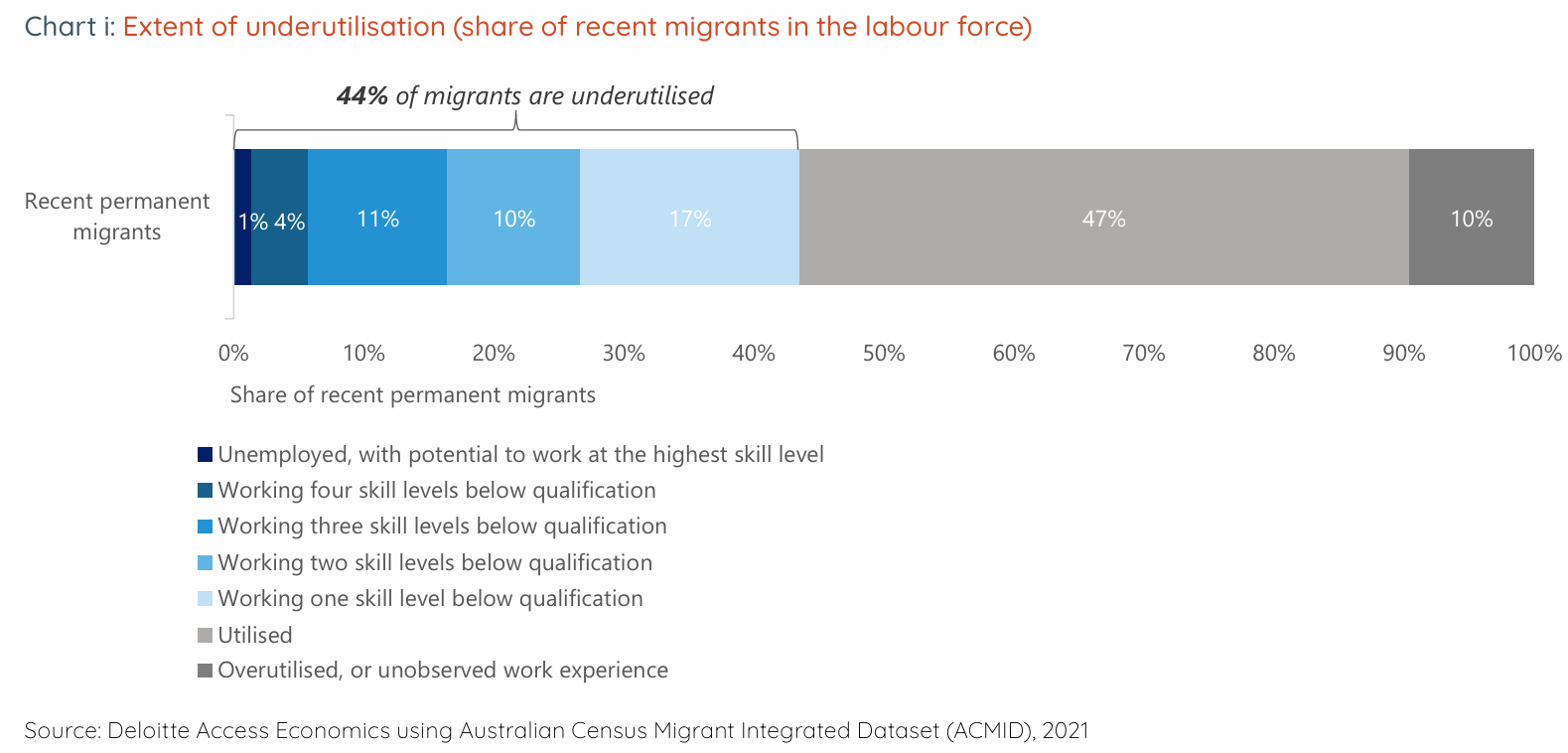
According to the federal government’s 2023 Migration Review, 51% of overseas-born university graduates with bachelor’s degrees were employed in unskilled jobs three years after graduation.
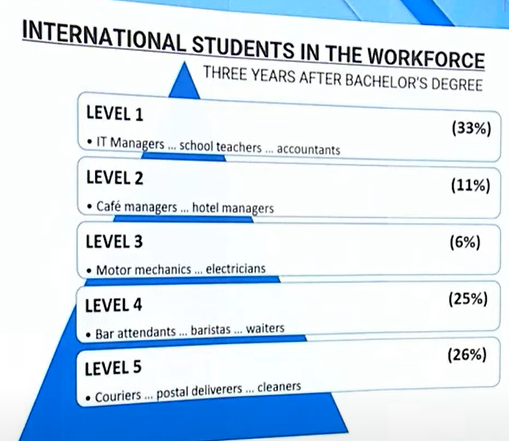
Source: Migration Review, 2023.
The Graduate Outcome Survey has also consistently shown that student graduates earn much less than locally born graduates and have worse labour market outcomes.
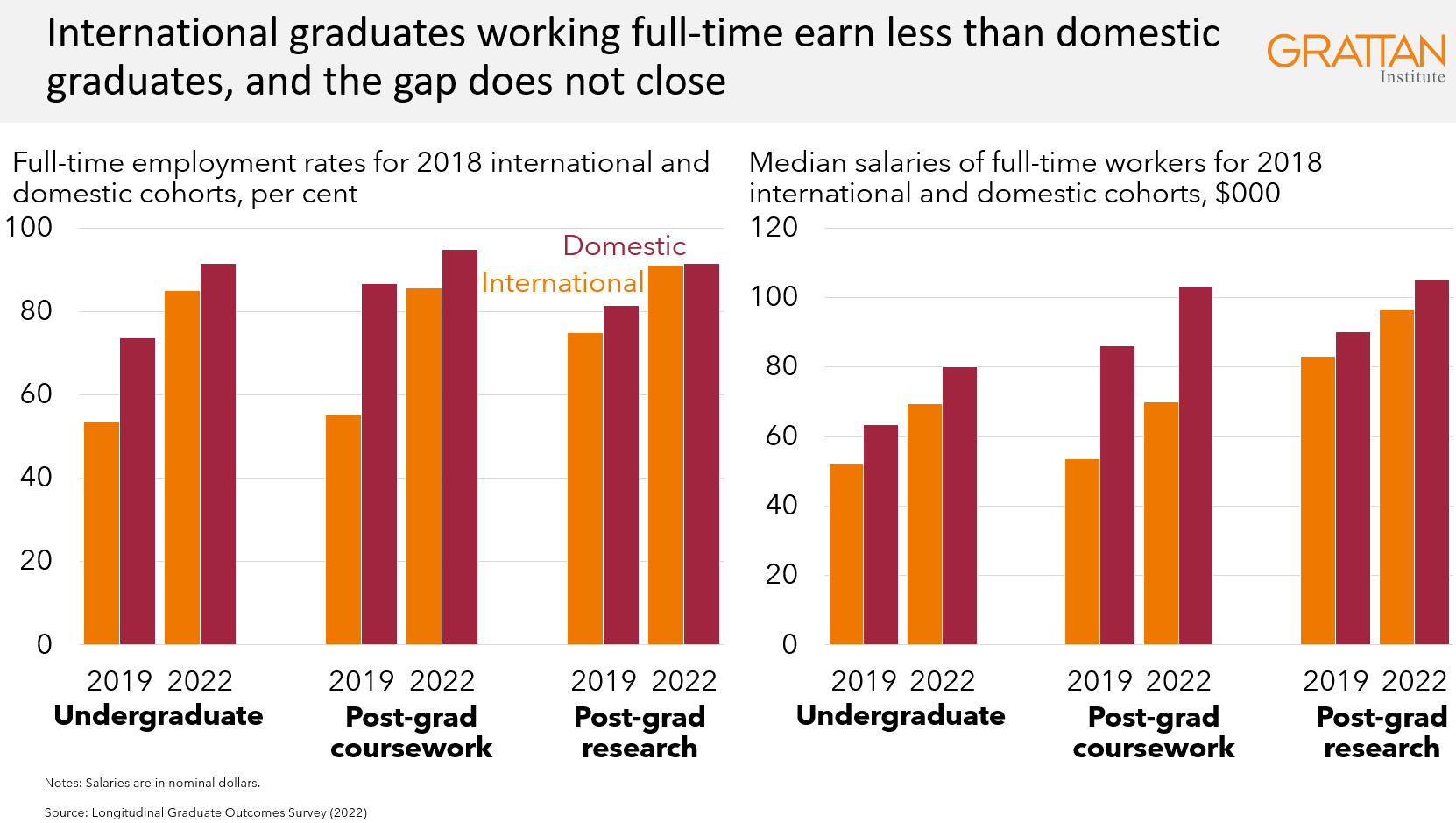
What additional evidence is required to prove that Australia’s ‘skilled’ migration system is failing to deliver the stated outcomes?
Mass immigration has failed to provide the requisite skills while exacerbating infrastructure and housing shortages, as well as environmental degradation.
The optimal solution is to operate a smaller, higher-skilled, and higher-income migration system.
The wage floor for all skilled visas should be set far higher than the median full-time salary (currently around $90,000). All skilled visas should also be employer-sponsored, requiring qualified migrants to start working in their field of expertise immediately.
All retirement visas, including parental and ‘golden’ tickets, should be abolished.
The structural flaws of Australia’s migration system cannot be ignored. Australia is depriving poor countries of talent while worsening domestic skill, housing, and infrastructure shortages.

